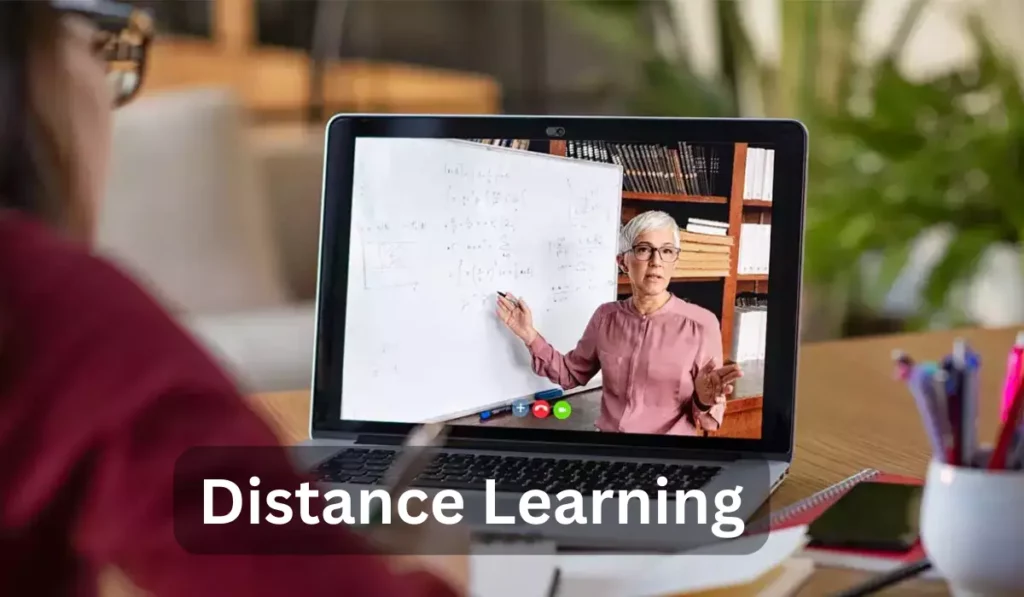Distance learning, a revolutionary approach to education, transcends traditional classroom boundaries, leveraging technology to facilitate learning from a distance. This educational model enables students to access learning materials, participate in classes, and complete assignments from virtually anywhere, provided they have internet connectivity.
Originally developed to cater to learners in remote or rural areas, distance learning has evolved into a mainstream educational pathway, embraced for its flexibility and accessibility.
Its significance has grown exponentially, especially in the face of global challenges like the COVID-19 pandemic, which necessitated remote learning solutions for students worldwide.
A Historical Perspective on Distance Education
The concept of distance education dates back to the 19th century, with the advent of correspondence courses delivered through postal services. This method of learning was initially designed to provide educational opportunities to people in remote locations.
The first known instance was in Great Britain in the 1840s, when Sir Isaac Pitman taught shorthand through correspondence. By the 20th century, with the emergence of radio and television, distance education began to take on new forms, incorporating these media to reach a broader audience.
The late 20th and early 21st centuries witnessed a significant transformation with the advent of the internet, giving rise to online courses and e-learning platforms.
Understanding the Definition of Distance Learning
Distance learning, also known as remote education, is defined as a mode of delivering education and instruction to students who are not physically present in a traditional classroom or campus setting.
It encompasses various forms of digital and online learning, utilizing technology to connect teachers and students separated by distance. This form of education typically involves a mix of synchronous (live online classes) and asynchronous (recorded lectures, online forums) learning methods.
The key characteristic of distance learning is its ability to provide a flexible learning environment, catering to individuals who might not be able to participate in traditional educational settings due to geographical, temporal, or personal constraints.
The Evolution of Distance Learning Technology
The evolution of distance learning technology is a journey marked by continuous innovation and adaptation. From simple correspondence courses to sophisticated online platforms, the technology underpinning distance learning has transformed dramatically.
Early stages saw the use of print materials and postal services, gradually evolving to include radio and television broadcasts. The digital revolution, however, was the turning point, introducing the internet and e-learning platforms.
Today, cutting-edge technologies like virtual reality (VR), augmented reality (AR), and artificial intelligence (AI) are being integrated into distance learning, offering immersive and personalized educational experiences. These advancements have not only made learning more interactive but also more accessible to a global audience.
Benefits of Distance Learning
Distance learning offers a plethora of benefits, chief among them being flexibility and accessibility. Students can learn at their own pace and schedule, making it ideal for those balancing education with work or family commitments.
It also breaks geographical barriers, allowing access to quality education regardless of a student’s location. Cost-effectiveness is another significant advantage, as distance learning often reduces the need for physical infrastructure and commuting expenses.
Additionally, it caters to diverse learning styles with customizable content and interactive tools, potentially leading to enhanced learner engagement and retention. For institutions, it expands their reach, enabling them to offer courses to a wider audience.
Challenges and Considerations in Distance Learning
Despite its advantages, distance learning presents certain challenges. One major concern is the digital divide; not all students have equal access to the necessary technology and internet connectivity.
There’s also the issue of student engagement and motivation – without the physical presence of a classroom, some learners may struggle with self-discipline and time management. Another consideration is the effectiveness of online assessments and the integrity of academic work.
Additionally, distance learning requires educators to develop different skill sets for effective online teaching, including the ability to use various technological tools and methods to engage students remotely. Addressing these challenges is crucial for the successful implementation of distance learning programs.
Types of Distance Learning Programs
Distance learning programs come in various formats, catering to different educational needs and preferences. The most common types include online courses, where learning materials are accessed and assignments submitted via the internet.
There are also hybrid or blended courses, which combine online learning with occasional in-person meetings. Massive Open Online Courses (MOOCs) offer an open-access, scalable way to deliver courses to a large number of participants.
In addition, there are synchronous programs, where students participate in live, online classes, and asynchronous programs, where students access materials at their own pace. Each type has its unique characteristics and benefits, providing options for learners with diverse needs.
Accreditation and Quality Assurance in Distance Education
Accreditation and quality assurance are crucial in ensuring the credibility and effectiveness of distance education programs. Accreditation is a process by which an external body evaluates the quality of an educational program or institution against defined standards.
For distance learning, this ensures that the programs meet the same rigorous criteria as traditional, in-person education. Quality assurance in distance education also involves regular review and improvement of courses, teaching methodologies, and technology used, ensuring they meet educational objectives.
Prospective students should verify the accreditation status of online programs and institutions to ensure they receive a recognized and valuable education.
Success Stories and Real-World Applications
Distance learning has numerous success stories, demonstrating its effectiveness and versatility across various fields. One notable example is the rise of online professional development courses, which have enabled working professionals to upgrade their skills without leaving their jobs.
In the realm of higher education, many prestigious universities now offer online degree programs, making higher education accessible to a global audience. Distance learning has also been pivotal in emergency situations, like the COVID-19 pandemic, where it allowed educational continuity when schools and universities were closed.
These real-world applications underscore the adaptability and resilience of distance learning as an educational model.
Future Trends and Innovations in Distance Learning
The future of distance learning is poised to be shaped by ongoing technological innovations and evolving educational needs. Emerging trends include the use of AI to provide personalized learning experiences and predictive analytics to improve student retention and success.
Virtual and augmented reality technologies are expected to become more mainstream, offering immersive learning environments. There is also a growing focus on microlearning – delivering content in small, manageable chunks – which aligns well with the digital nature of distance learning.
Additionally, we can anticipate more collaborative tools and platforms to facilitate interaction among students and between students and instructors, enhancing the sense of community in online learning environments.
Conclusion
Distance learning has undeniably transformed the landscape of education, offering unprecedented flexibility and access to learning opportunities. Its impact extends beyond mere convenience, fostering a more inclusive and diverse educational environment.
As technology continues to evolve, distance learning will adapt and expand, further breaking down barriers to education. Its ongoing influence on the educational sector signifies a shift towards a more interconnected, accessible, and versatile approach to learning.
The future of education will likely be a blend of traditional and remote learning modalities, with distance learning playing a crucial role in shaping educational practices and policies.
Sources:
Staff, C. (2023, November 29). What Is Distance Learning? Types and Benefits. Coursera. https://www.coursera.org/in/articles/distance-learning
Knott, R. (2023, March 2). What is Distance Learning? The Complete Guide. The TechSmith Blog. https://www.techsmith.com/blog/distance-learning/






